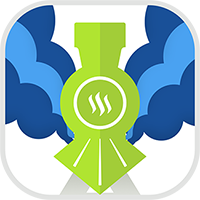Are you using a Mr. Coffee machine or other drip coffee maker? Do you realize that you are using 3x more coffee to make the same amount, effectively tripling the price you pay for coffee?
Stay tuned and I will show you…
How to make coffee – the right way
This is a spin-off of my original TRUTH about coffee series, which is still in production! But later episodes have been delayed as we continue to learn more about Steem and blogging, but will reappear when least expected ;p
Mr. Coffee has become synonomous with the labor-saving electrodomestic revolution – save time and, since time is money, money by letting machines do everything for you! Well this interesting machine has a secret – Mister is very inefficient with coffee grounds!
You could reuse the grounds or run water through them multiple times to make sure you squeeze every drop out, but there is an easier way, which we will show you today.
STEP 1 - WATER IN POT
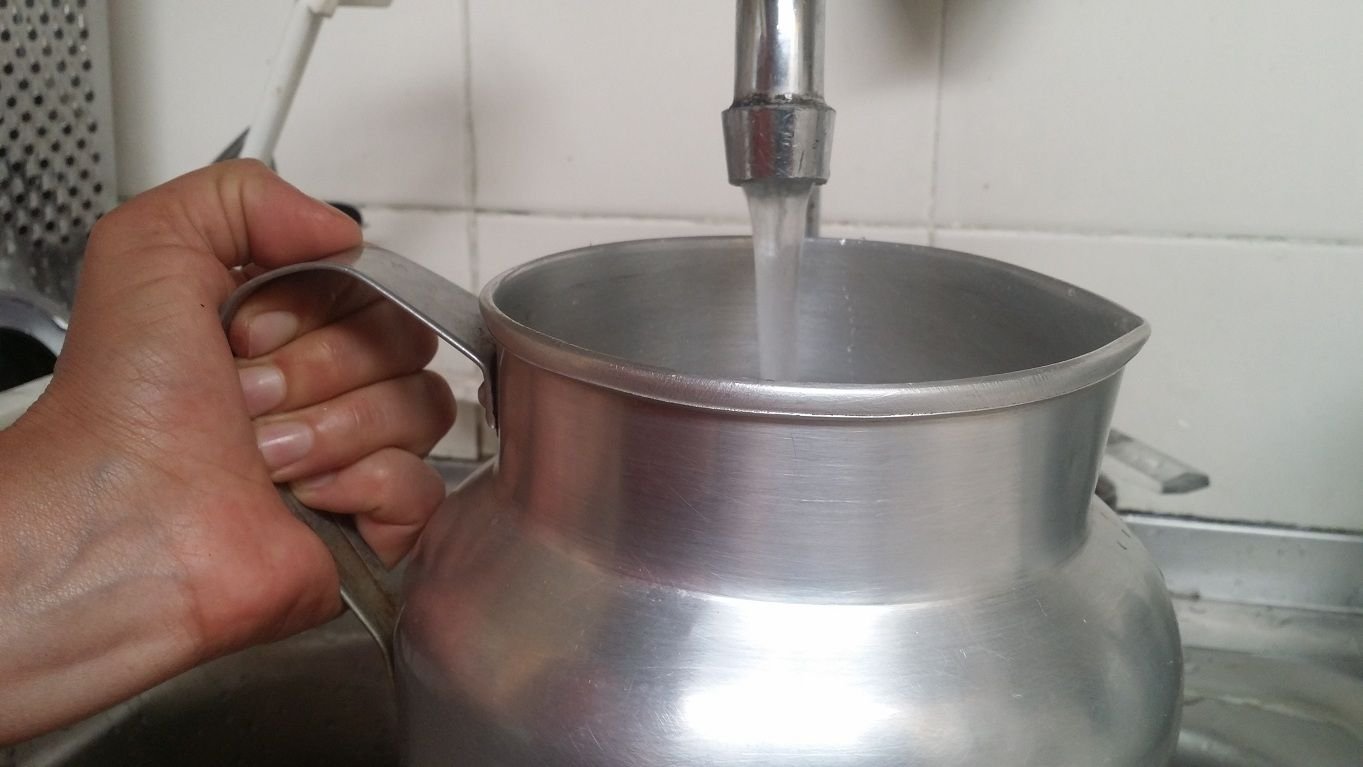
Start with a pot of water, make sure you have a lid. If it is city water, we first leave it out for about 5 minutes to make sure all the chlorine evaporates from the water.
Find your nearest heating device, usually in the kitchen, used to heat up food and beverages. We are using a gas stove, and will light the gas with a lighter.
STEP 2 - HEAT SOURCE ACTIVATED
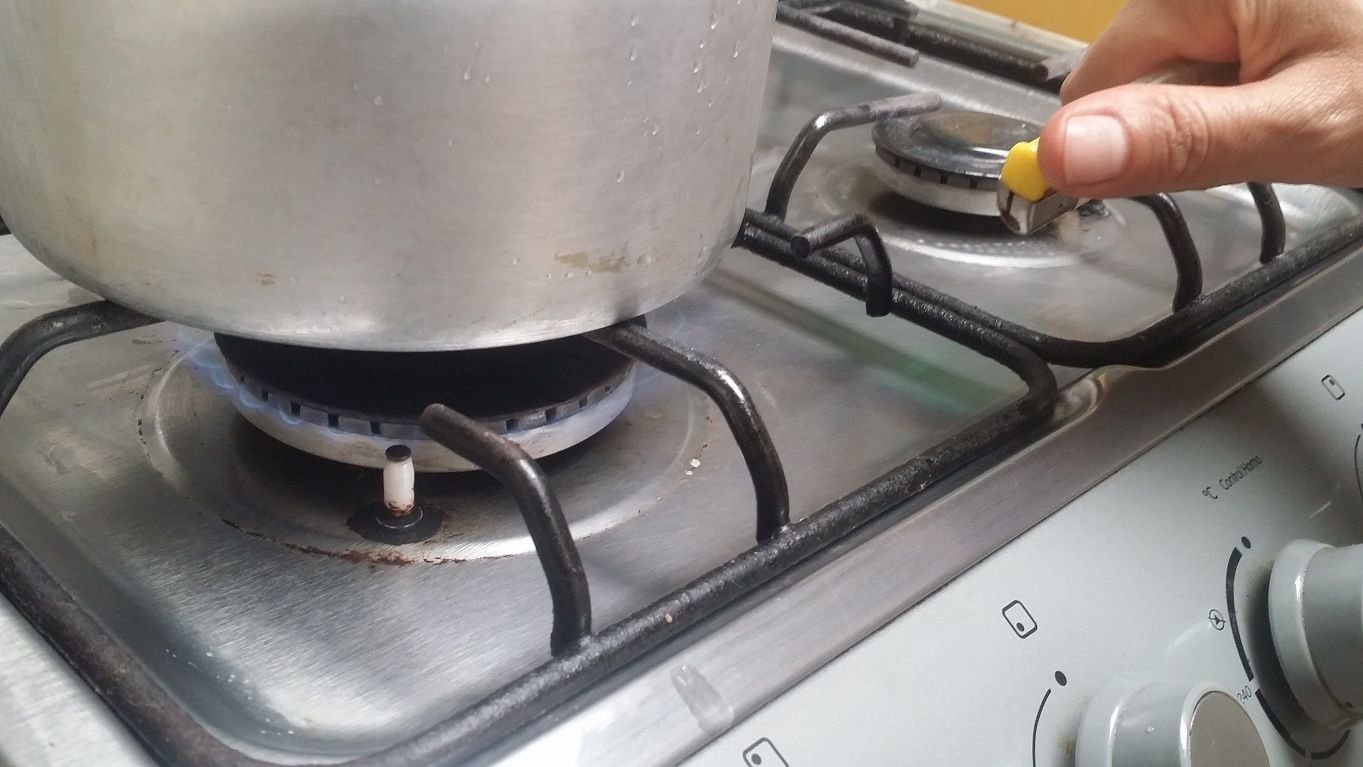
Add sugar or sweetener to taste. This amount must be learned, since you cannot actually taste the final product at this point. More sugar can be added later, but never subtracted, so its best to err on the low side.
This is also the step where you would add other flavorings, such as chickory root or whatever weird stuff you put in your coffee where you live ;p
STEP 3 - FLAVORINGS
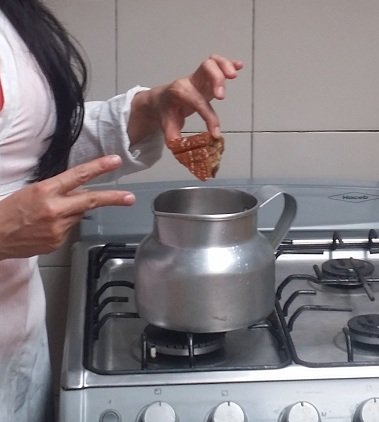
We are using panela, which is raw cane juice condensed into blocks. This panela is used to make white sugar in a mysterious process. We have learned that whiter is not necessarily better, in fact when it comes to sugar, I think the browner the better might be the case ;p
We hope to do an in depth exposé very soon on sugar cane and the process used to tranform it into panela and about half a dozen other sugary products as occurs here locally. For now, know that panela is the main export product of the sugar cane, and some more 'developed' latin american countries may not have access to panela, as it is all exported to make room for white sugar imports.
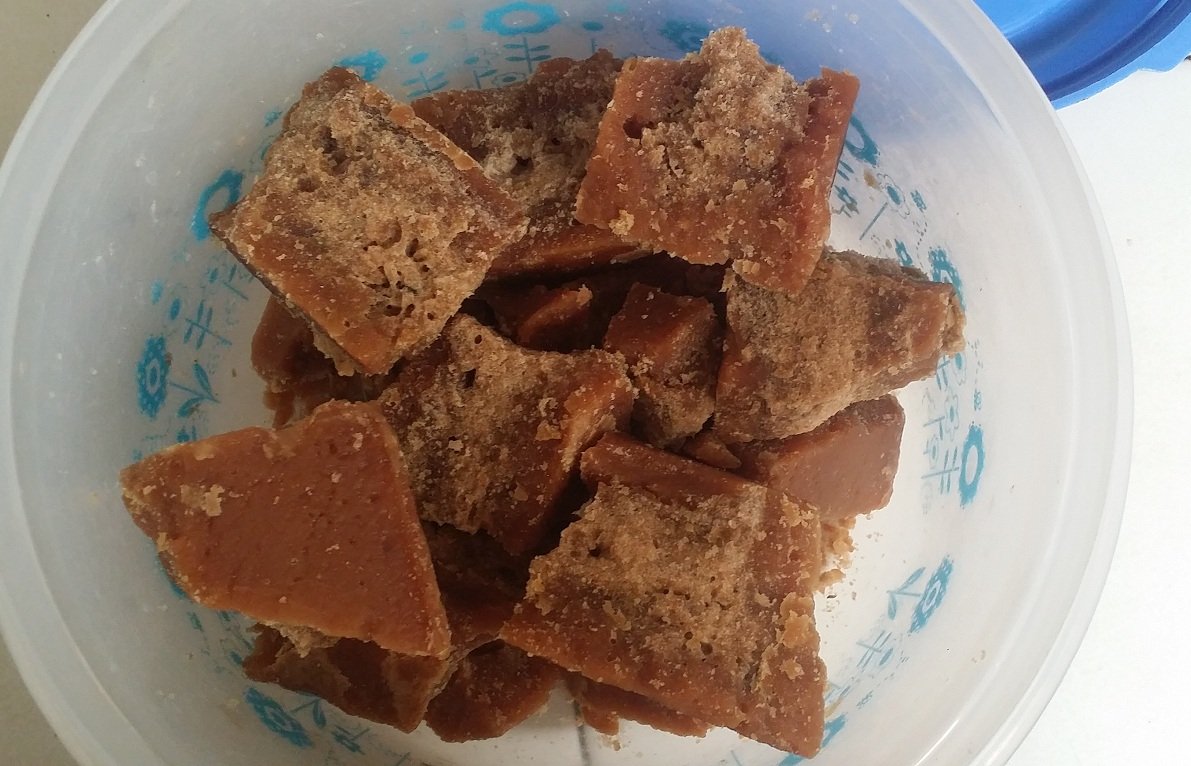
This water and sugar mixture will come to a boil – it will now be brown water, or clear still if you used white sugar, and this mixture is called agua-panela - literally sugar water. Colombians have many ingenious uses for this sugar water, but its principle use, at least in my mind, is to make coffee.
STEP 4 - BOIL WATER
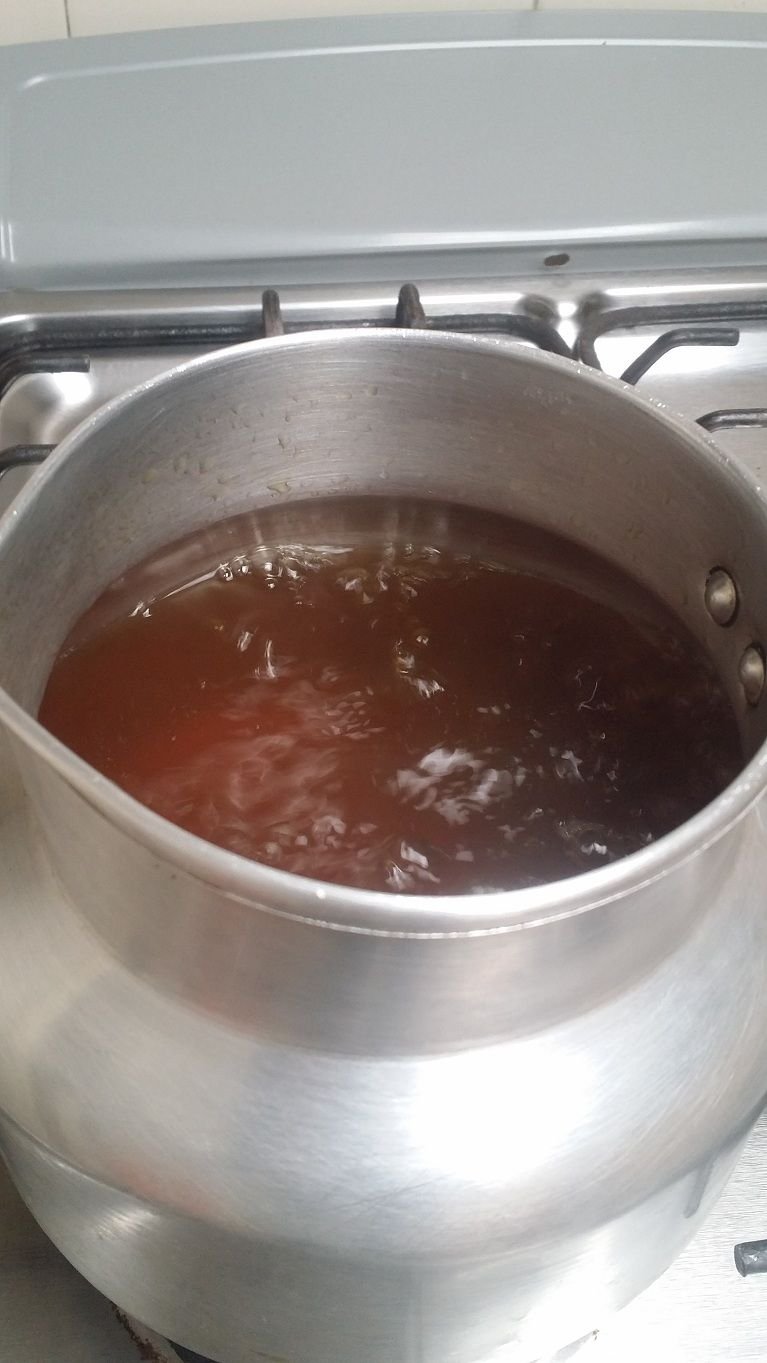
For this pot we have calculated 2 semi heaping spoons of coffee for 12 cups; Mr. Coffee wants at least six spoons for the same amount of coffee!
Place the coffee in the water after it has stopped actively boiling. Putting the coffee in too soon {too hot} at this point will cause expansion and spill-over, in other words a good excuse to clean your stove.
STEP 5 - MIX IN THE COFFEE
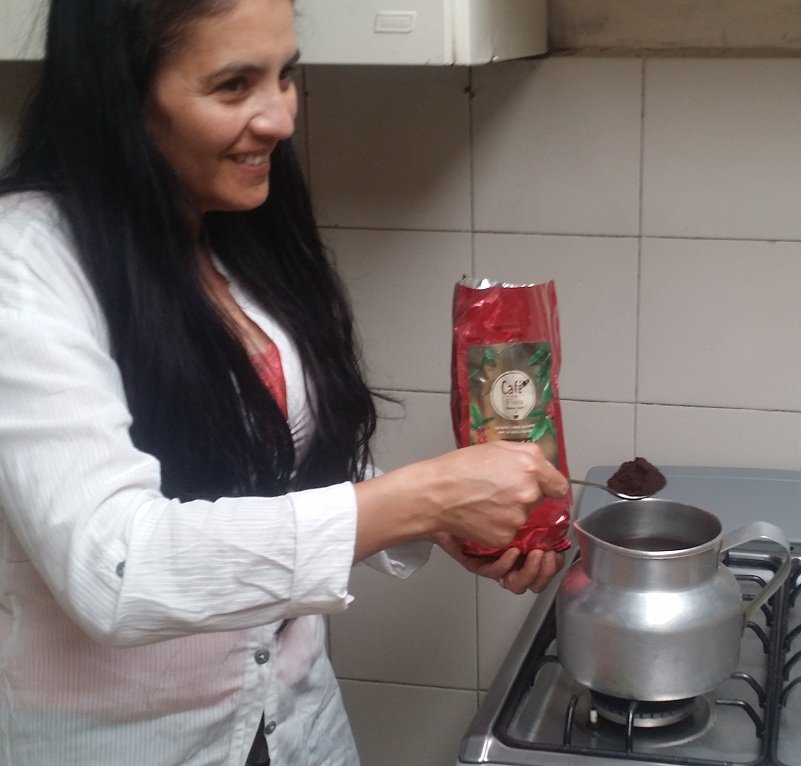
Once the coffee is placed, we give it a quick stir. The hydrodynamics of boiling water will ensure that the coffee continues to mix through and steep as it slowly makes its way to the bottom of the pot.
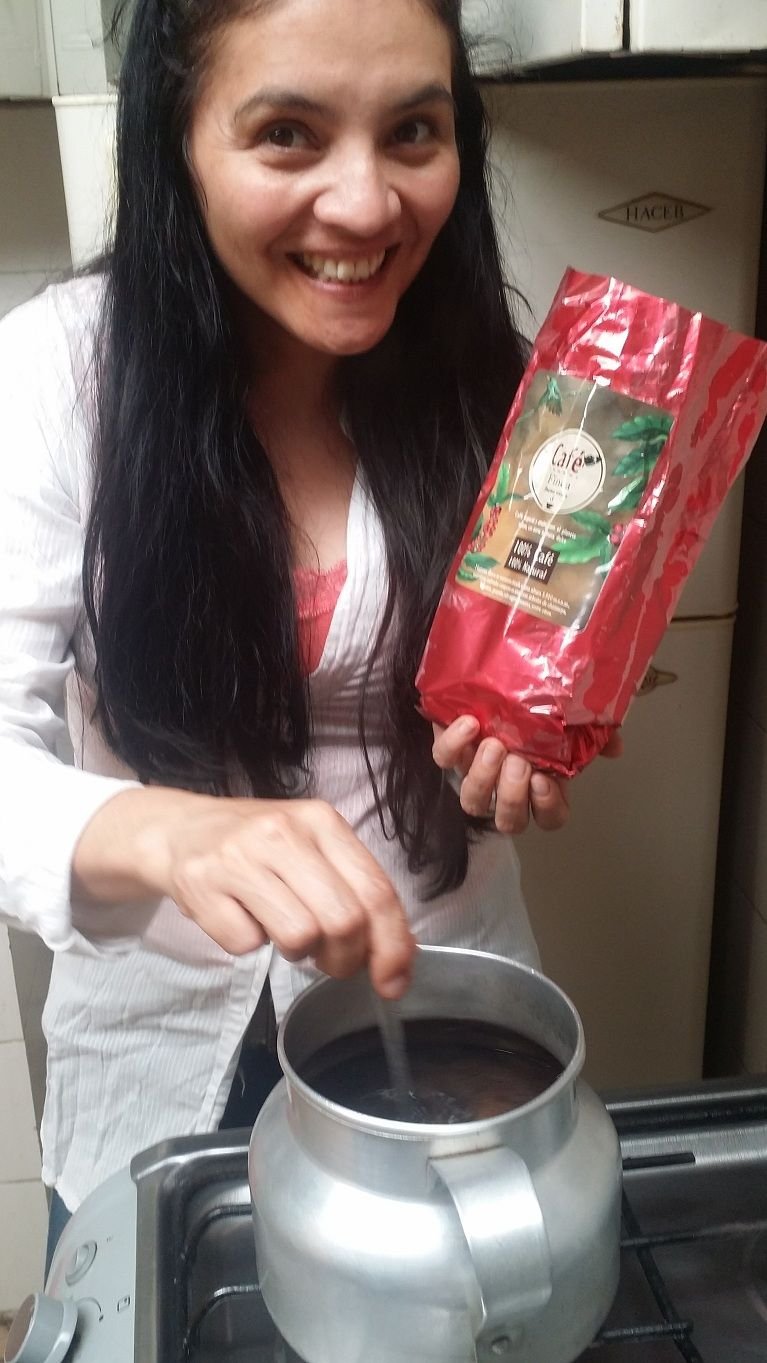
STEP 6 - Cover it up!
This is an essential step; cover the coffee pot while it rests or much of the delicious flavor and aroma will be lost!
Let sit for at least five minutes; during this time all of the flavor is steeping into the sugar water from the coffee grounds.
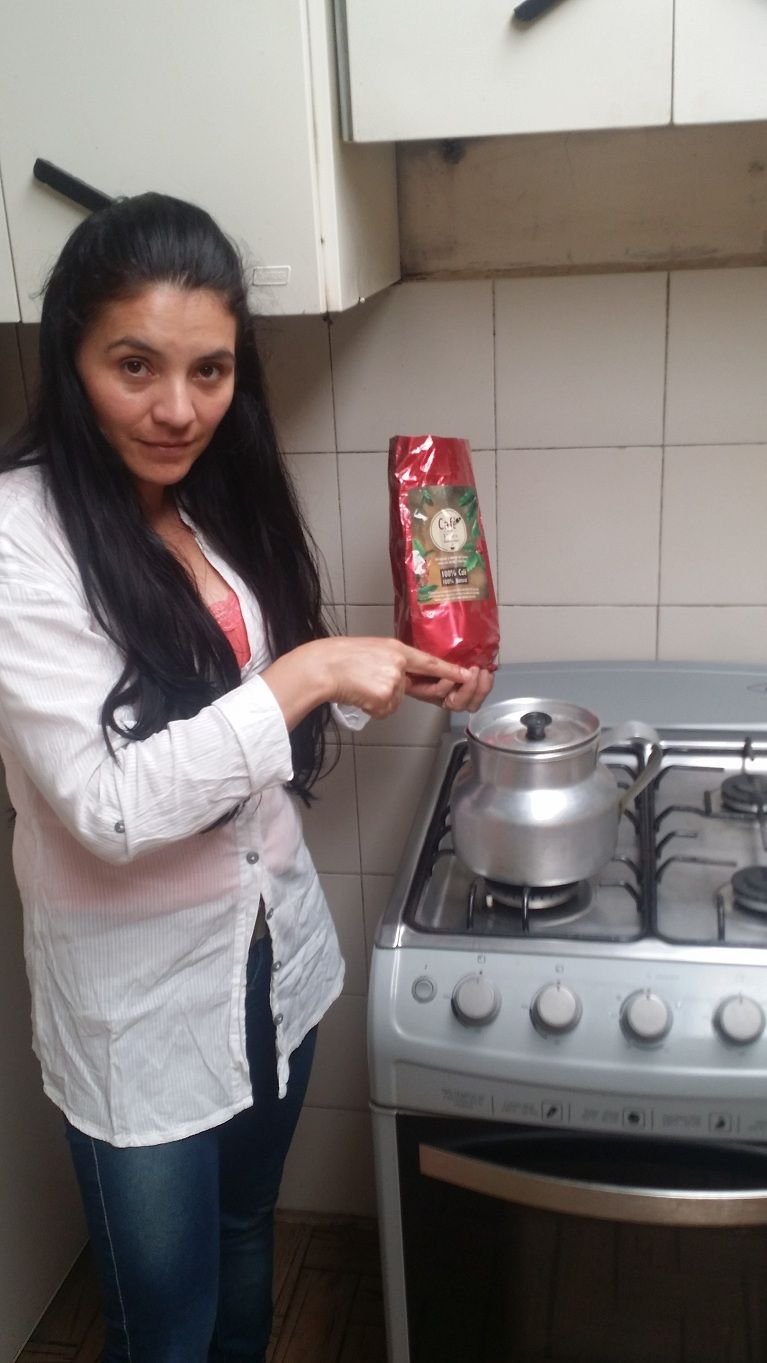
Once the coffee has fully steeped, you can now drink! It is still very hot, so be careful. You can pour it directly into your thermos, which we do, to keep it hot for as long as it takes you to drink 12 cups!
BUT WAIT!
Isn't this coffee full of coffee grounds????
Yes, yes it is. There is a very simple strategy that we will show you at the end, but know that we never use it. The coffee will settle by density, and the soaked coffee grounds are more dense and thus settle to the bottom. Being sure not to shake it up before serving helps, and very few coffee grounds make it to the cup.
But that may not be good enough, we understand. Here is the secret, a cloth filter!
OPTIONAL STEP 7 - FILTER COFFEE
Any questions - you know where to leave them (Hint: Click reply)
Check out my good friends riding the ecotrain with me - they always have something interesting to say!
